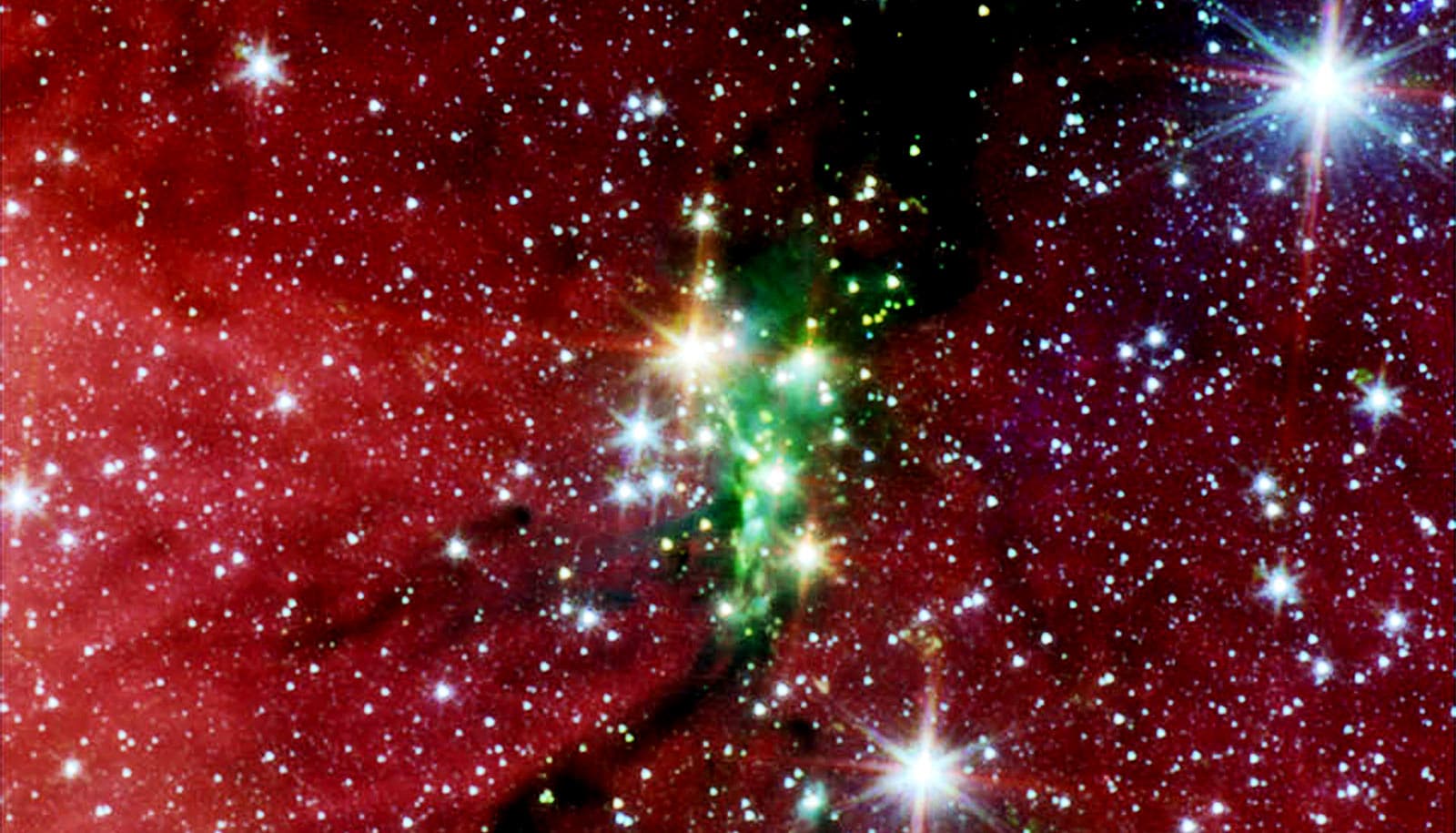Researchers have captured, for the first time in a laboratory setting, the process thought to be responsible for generating and sustaining astrophysical magnetic fields.
In a paper in the Proceedings of the National Academy of Sciences, the researchers report the findings could help explain the origin of large-scale magnetic fields that have been observed but didn’t match theoretical calculations.
The work is the latest to refine further scientists’ understanding of a once-elusive phenomenon known as a “turbulent dynamo,” an astrophysical process that amplifies magnetic fields. By creating experimental conditions that mimic most hot, diffuse plasmas in the universe—conditions in which the turbulent dynamo mechanism is thought to operate—the researchers were able to quantify the rate at which a turbulent dynamo amplifies magnetic fields. Up until now, the rate had only been predicted theoretically and via numerical simulations.
“The rapid amplification we found exceeds theoretical expectations and could help explain the origin of the present-day large-scale fields that are observed in galaxy clusters,” says Petros Tzeferacos, an associate professor of physics and astronomy and a senior scientist at the University of Rochester’s Laboratory for Laser Energetics (LLE).
The researchers—part of the Turbulent Dynamo (TDYNO) team—conducted their experimental research at the LLE’s Omega Laser Facility, where they had previously demonstrated experimentally the existence of the turbulent dynamo mechanism.
Using laser beams whose total power is equivalent to that of 10,000 nuclear reactors, the researchers were able to study plasma at energy levels that previous liquid-metal and laser-driven experiments could not.
“Understanding how and at what rates magnetic fields are amplified at macroscopic scales in astrophysical turbulence is key for explaining the magnetic fields seen in galaxy clusters, the largest structures in the universe,” says lead author Archie Bott, a postdoctoral research associate in the astrophysical sciences department at Princeton University.
“While numerical models and theory predict fast turbulent dynamo amplification at very small scales compared to turbulent motions, it had remained uncertain as to whether the mechanism operates rapidly enough to account for dynamically significant fields on the largest scales,” says Bott.
The experiments demonstrated that turbulent dynamo—when operating in a realistic plasma—can generate large-scale magnetic fields much more rapidly than currently expected by theorists.
“Our theoretical understanding of the workings of turbulent dynamo has grown continuously for over half a century,” says Gianluca Gregori, professor of physics at the University of Oxford and the experimental lead of the project. “Our recent laser-driven experiments were able to address for the first time how turbulent dynamo evolves in time, enabling us to experimentally measure its actual growth rate.”
Funding for the project came from the US Department of Energy, the National Science Foundation, the European Research Council, the Engineering and Physical Sciences Research Council, the National Laser Users’ Facility of DOE’s National Nuclear Security Administration, and the ASCR Leadership Computing Challenge of the DOE Office of Science.
Source: University of Rochester


